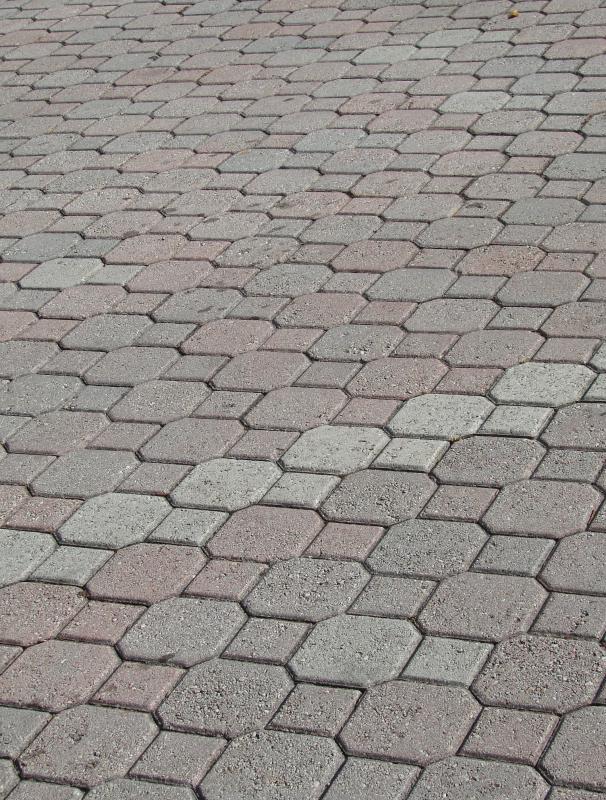At WiseGEEK, we're committed to delivering accurate, trustworthy information. Our expert-authored content is rigorously fact-checked and sourced from credible authorities. Discover how we uphold the highest standards in providing you with reliable knowledge.
What are the Different Options for Paving Patterns?
Options for paving patterns are numerous because of the large variety of shapes, colors, and styles of paving materials available. Whether the desired outcome is simple and classic or wildly ornate, creativity is really the only limitation on designs. Different paving patterns can be created by mixing different colored or textured pavers, arranging blocks in interesting or unique designs, or utilizing unconventional shapes.
Color is probably the most basic element of designing paving patterns. Even if all the paving blocks are the same exact shape and size, or if they are arranged in the most basic linear pattern, mixing in different colors can create a design. Choices of colors can be natural options like stone or reddish brick, or synthetic colors cast in tinted cement. An easy way to create a pattern is to incorporate colored pavers into a neutral background. Some people may choose to make intricate shapes or use multiple colors per pattern, while others may favor a simple border or checkerboard design.

Texture can be used to create paving patterns in a similar way to colored pavers. Textured pavers come in many different colors and shapes, and have designs etched into their surfaces. Placing textured pavers among plain, solid pavers is a great way to create a subtle pattern. Walkways or driveways that are subject to very heavy traffic might not be the best places to use textured pavers, because the designs might wear away over time, causing the pattern to fade.
Simple shaped blocks can be transformed into beautiful paving patterns simply by making their arrangements more intricate. Basic rectangular paving bricks can be organized into herringbone, basket weave, interlocking, or parquet patterns, just to name a few. Geometric patterns can adorn driveways, walkways, garden paths, patios, or any surface where paving is desired to add interest to the surface. Placing traditional square or rectangular pavers in patterns such as these is a popular stylistic choice because these patterns add visual interest without being too conspicuous or looking fussy.
Even though plenty of paving patterns can be crafted from the standard rectangular or square blocks, even more options become available when irregularly shaped pavers are considered. Hexagonal pavers can be arranged in linear patterns just like rectangular blocks, but contribute the added interest of extra sides. Wedge-shaped paving stones can be whirled into circular patterns. Often, especially if the surface is large, a design will feature a few intricately designed sections settled into a background of neutral color and pattern.
AS FEATURED ON:
AS FEATURED ON:











Discuss this Article
Post your comments